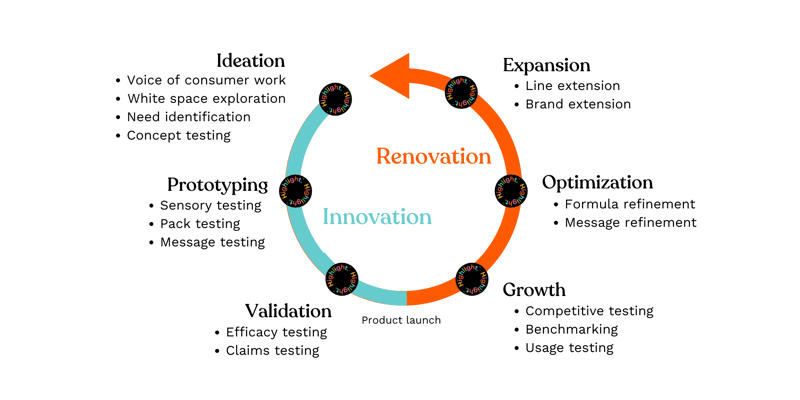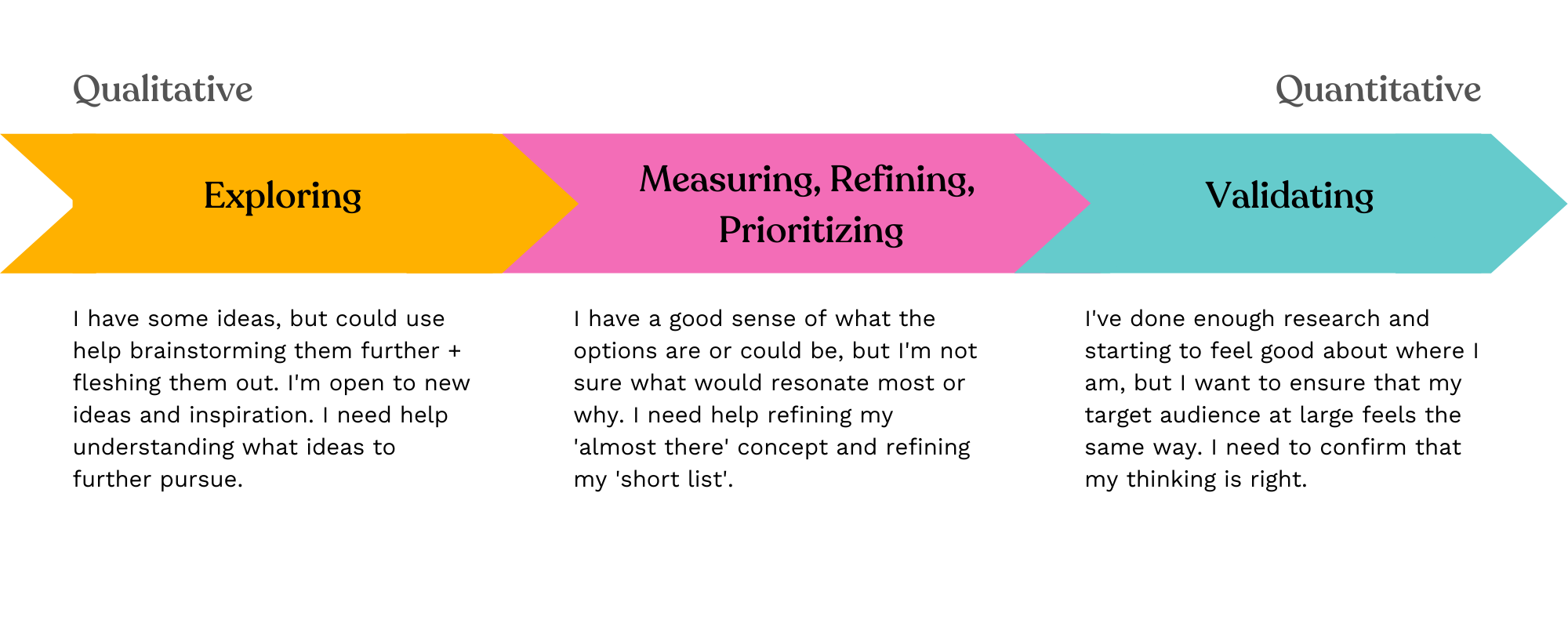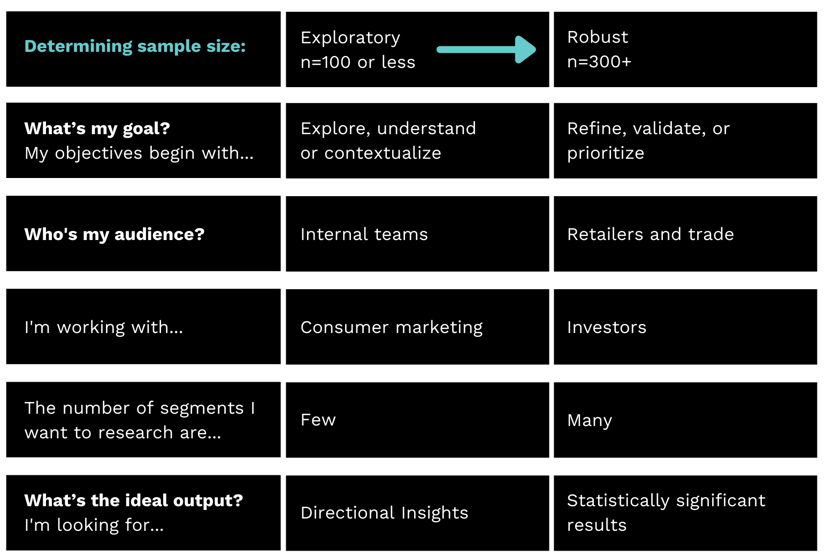Clients often come to us with a clear research need but are looking for guidance on sample size. How much is too much? Too little? In this post, we answer your FAQs and help you determine the right number of people to research to achieve your research goals.
Q: How should I design my research study?
A: Staying resource efficient means getting robust enough data, with just the right sample size. But in order to make a call on sample size and recruiting criteria, we first need to align on goals.
Go back to our product development lifecycle. Start by understanding where you are in this process to make the more informed decisions about what research to invest in and how much.
 Here are a few questions you can use to start envisioning research that is tailored to your specific needs.
Here are a few questions you can use to start envisioning research that is tailored to your specific needs.
-
What are the critical decisions I need to make?
-
Do I have the data I need to make them?
-
What outstanding questions do I have?
-
What are the KPIs tied to these decisions?
-
What data do I need to ensure success?
Q: Should I go with qualitative or quantitative?
A: The benefits of qualitative and quantitative research depend on where you are in the process. If you need to explore, understand or contextualize a need, opportunity space, consumer type, or product idea, then qualitative research is the way to go. If you want to refine, validate, or prioritize among a shortlist of ideas, then you need quantitative insights (or a mix of qual and quant) to make a decision.
Here’s a framework that can help you pinpoint where you are in your journey!

Q: Okay, I know what my goals are and which methodology to use. Now how do I think about sample size?
A: No one wants to wait weeks for data or spend tens of thousands of dollars to get it. Choosing the right sample size can help you be as resource-efficient as possible while still gathering robust insights for your learning goals.
As a rule of thumb: when you go lower in sample size, you tend to go higher in depth. That means that a lower sample size will provide more thorough responses on an individual scale and a higher sample size will provide fewer in-depth insights but across a wider audience.
Here’s a quick way to determine sample size and where you are on the spectrum:

For more on this Method Series, visit the Highlight blog!




